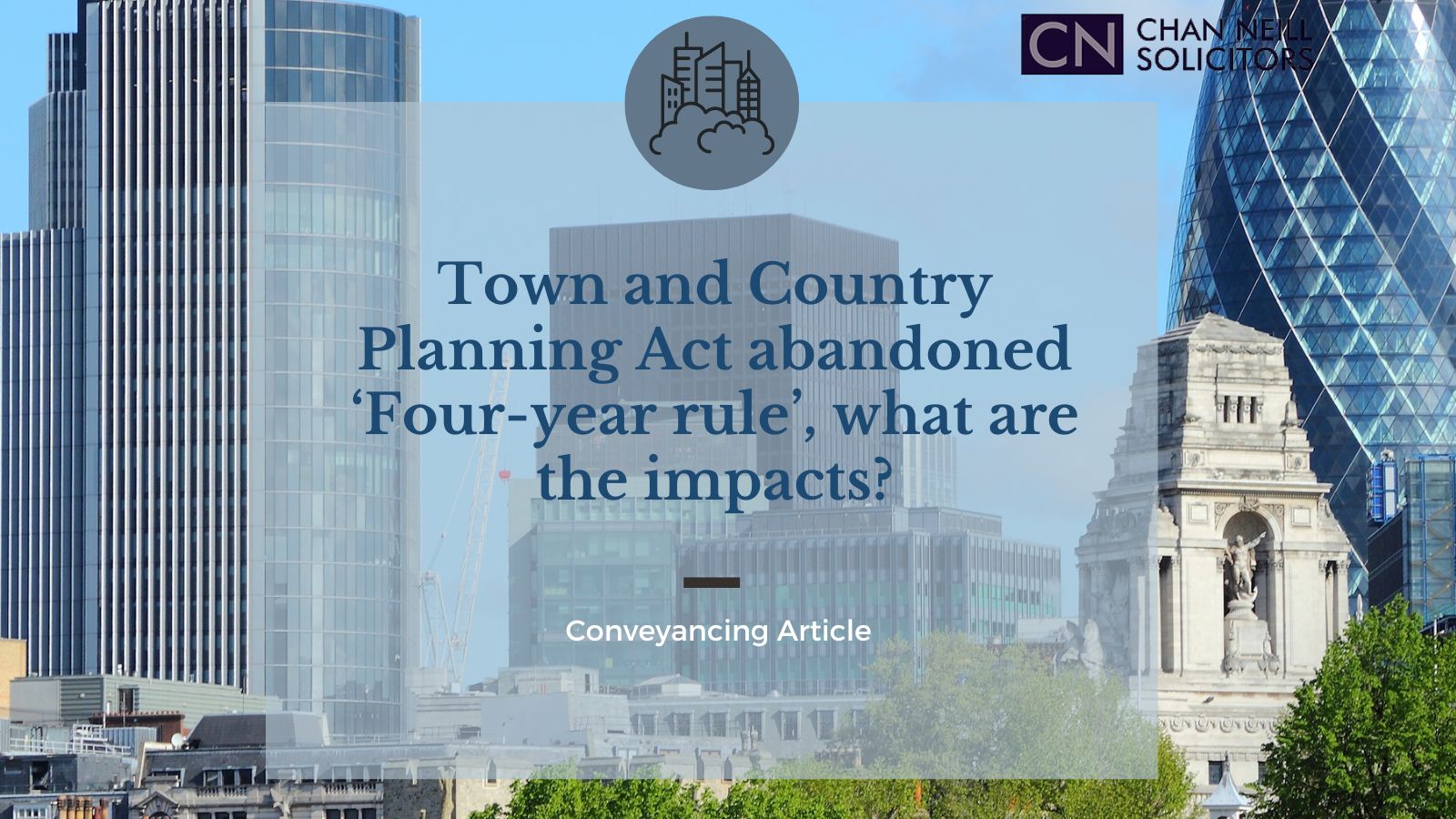Relationship breakdown and separation: Impact on a UK visa

Most of the visa pathways under the UK Immigration Rules allow dependent partners, which include spouses as well as unmarried partners to join their British Citizens, settled persons or leading applicants under the various visa routes in order for them to continue enjoying family and private life in the UK. It is, however, unavoidable, that every relationship goes through a fair share of ups and downs and in some cases, results in separation and divorce.
As far as the Home Office is concerned, every separation or divorce from a UK-based partner must be reported. This is because the visa of dependent partners depends on the relationship in question, making their stay in the UK limited to the leading applicant’s visa or visa validity on family routes.
Different rules apply to family members of the BN(O) Status Holders, where the subsequent applications for leave to remain or settlement do not require proof of a subsisting relationship. Similarly, in EUSS cases, each individual with a visa granted under the EUSS Scheme has leave in their own right. As such, the test of proportionality must be applied by the Home Office before considering visa cancellation.
The reporting can be made by either the visa status holder or the sponsoring partner. There is an electronic application form that can be found on the GOV.UK website is specially designed for this purpose.
The ultimate question is what happens to a valid UK visa after the necessary reporting has been made to the Home Office?
According to the Home Office’s internal procedure, once the notification of the relationship breakdown has been received, the case will be considered for cancellation and the visa will be curtailed to 60 days unless there are exceptional reasons to cancel permission with immediate effect or the individual has less than 60 days permission remaining. During the curtailment period, an alternative visa status can be sought via other permittable UK visa routes.
If there is a reliable indication that the UK visa holder has been a victim of abuse or domestic abuse at the hands of their UK spouse or partner, the curtailment will not be persuaded. This, however, excludes cases where the lead applicant holds a temporary UK visa (for example under the Point-Based System).
It is a common practice that the decision to cancel a UK visa is served via email but can also be sent by post to the last known address where the email address is not provided. It is advisable to regularly check a spam folder in the email account as the Home Office communication can land there.
In the most recent judgment on this matter [2024] EWHC 1097 (Admin), the claimant challenged the Home Office visa refusal on two grounds, one of them being the statutory presumption of service. The judge accepted that the curtailment decision served via email was capable of being rebutted, however, without any substantial evidence it was impossible to ascertain. The onus is on a UK visa holder to regularise their immigration status as soon as possible following the relationship breakdown, even, if they have been unaware of the reporting being made to the Home Office by the other party to the relationship.
This article is provided for general information only. It is not intended to be and cannot be relied upon as legal advice or otherwise. If you would like to discuss any of the matters covered in this article, please contact us using the contact form or email us on reception@cnsolicitors.com
Navigating Business Restructuring: Strategies for Success in Turbulent Times

Introduction
Due to the interconnected global economy, markets are experiencing significant disruptions causing turmoil and challenges for businesses and their stakeholders. Successfully guiding clients through complex restructuring and insolvency processes across borders demands not only experience but also a global presence, expertise in advising diverse stakeholders, and seamless coordination across legal domains.
Understanding Business Restructuring
Business restructuring is an important process that businesses go through to deal with tough economic times, adapt to changes in their industry, or fix internal problems. Making it work usually means making smart decisions, working together with everyone involved, and being ready to change how the business operates. This article looks at real examples of companies that have successfully restructured their finances, showing what they did and how it helped their overall business.
Legal Considerations in Business Restructuring
Legal considerations play a vital role in business restructuring. It is integral to business restructuring to encompass regulatory requirements and contractual obligations. Understanding the relevant regulatory framework is essential to ensure compliance with corporate governance, securities laws, and industry-specific regulations. Managing existing contracts may necessitate renegotiation or termination, whilst adherence to employment laws is critical, especially concerning workforce changes. Moreover, considerations such as intellectual property, taxes and environmental regulations must be carefully evaluated to avoid legal complications. A comprehensive grasp of the legal landscape is vital for effective restructuring, risk mitigation and regulatory compliance.
Steps in Business Restructuring
Preparing for restructuring is similar to laying the groundwork for a major renovation project. It involves a comprehensive examination of the company's financial health and operational efficiency, identifying areas that need improvement and devising a detailed plan to address these issues. This plan should outline specific objectives, strategies and timelines, serving as a roadmap for the restructuring process. Seeking input from financial advisors and legal experts can provide valuable insights and help anticipate potential challenges that may arise.
Negotiating and documenting the restructuring plan requires collaboration with various stakeholders, including creditors, suppliers and employees. This entails renegotiating contracts, restructuring debt agreements and formalising legal documents such as restructuring plans and employment contracts.
Throughout this process, clear communication, transparency, and attention to detail are essential to ensure everyone is aligned and the restructuring strategy is executed effectively. By carefully laying the groundwork and meticulously planning each step, companies can navigate the complexities of restructuring with confidence and achieve their desired outcomes while safeguarding the interests of all involved parties.
Conclusion
Navigating the complexities of business restructuring requires a comprehensive understanding of the interconnected global economy and the legal landscape. With expertise in debt finance, restructuring, and litigation, our team is well-equipped to guide clients through the intricacies of restructuring, safeguarding their interests and achieving long-term success.
This article is provided for general information only. It is not intended to be and cannot be relied upon as legal advice or otherwise. If you would like to discuss any of the matters covered in this article, please contact us using the contact form or email us on reception@cnsolicitors.com
Town and Country Planning Act abandoned ‘Four-year rule’, what are the impacts?

The Levelling-up and Regeneration Act 2023 significantly advances the UK's urban development and planning regulations. Enacted on 26th October 2023, this comprehensive reform significantly amends the country's planning system, impacting developers, property owners, and local planning authorities, especially regarding unauthorised developments. One critical change is the amendment to Section 171B of the Town and Country Planning Act (TCPA) 1990, which alters the enforcement period for unauthorised developments.
Previously, the "four-year rule" under the TCPA 1990 provided immunity from enforcement action for developments or land uses existing continuously for four years without challenge. However, the Levelling Up and Regeneration Act 2023 extends this period to ten years in England, effectively doubling it. This extension offers local planning authorities in England a broader timeframe to address unauthorised developments, potentially reducing instances of unauthorised construction.
This amendment significantly impacts enforcement practices, development dynamics, and due diligence processes. Developers and property owners now face increased scrutiny and must exercise greater caution when undertaking projects without proper planning permissions. The extension provides local planning authorities in England with more time to curb unauthorised construction and enhance adherence to planning regulations.
The transitional provision accompanying this amendment ensures consistency in enforcement practices, maintaining the previous four-year enforcement window for developments completed or breaches occurring before 25th April 2024. However, it also introduces regional disparity in planning legislation between England and Wales, potentially resulting in divergent approaches to addressing unauthorised development.
The rationale behind extending the enforcement period is multifaceted, aiming to enhance regulatory compliance, deter unauthorised construction activities, and support sustainable development. Overall, the Levelling-up and Regeneration Act 2023 represents a significant step forward in the UK's planning system evolution, with the extension of the enforcement period for unauthorised development standing out as a prominent amendment.
In conclusion, this legislation heralds a new era in town and country planning, characterised by extended enforcement periods and regional variation in legislation. By providing local planning authorities in England with more time to address unauthorised developments, this change aims to promote regulatory compliance and sustainable development practices. However, it also emphasises the importance of vigilance and strategic navigation of planning regulations in the evolving urban landscape of the UK.
If you plan to purchase a regarding residential properties, commercial properties or engage in any real estate transactions, please get in touch with Chan Neill Solicitors. Our team of property solicitors has extensive experience in assisting local and overseas buyers on their journey to settling in their new homes.
This article is provided for general information only. It is not intended to be and cannot be relied upon as legal advice or otherwise. If you would like to discuss any of the matters covered in this article, please contact us using the contact form or email us on reception@cnsolicitors.com
Continuous residence rule in the Long Residence applications

The main requirement for the Long Residence visa category is to spend at least 10 years in the United Kingdom lawfully. The word “lawfully” is defined as having valid permission to be in the UK, such as for study, work, family purposes (but not permission as a visitor or short-term student or a seasonal worker).
The 10-year period that includes time spent in the UK unlawfully is not covered by this post. More information on this can be found in Appendix Private Life.
Appendix Long Residence
The Statement of Changes (“SoC”) in Immigration Rules laid before Parliament on the 14th of March 2024 (HC 590) introduced big changes to the Long Residence route. As such, a new requirement was brought in for applicants to have had their current permission for at least one year before attempting a settlement application under the Long Residence route. In addition, it altered the way of meeting the “Continuous residence” requirement by introducing new absences calculation technique “for greater consistency across immigration rules” [quoted from the Explanatory Memorandum to the SoC (HC 590)]. Although consistency is a value of paramount importance, it remains questionable whether the primary legislation needed consistency in this particular instance.
The newest edition of the Immigration Rules for Long Residence visa route can be found in a recently introduced Appendix Long Residence, which replaced the provisions in Part 7 of Rules. It includes requirements for Permission to stay, Settlement as well as the Transitional arrangements for those, granted an extension of stay on the basis of Long Residence on or before 8 July 2012. The main difference between Permission to stay and Settlement routes is that in the latter, the English Language and Life in the UK test requirements must be met.
Historical background to “Continuous residence” requirement
The Immigration Rules for the Long Residence visa route were first laid before the House of Commons on 31 March 2003 (Statement of Changes HC 538). From there on, and until the 11th of April 2024, ‘Continuous residence’ in the Immigration Rules was defined as:
“residence in the United Kingdom for an unbroken period, and for these purposes a period shall not be considered to have been broken where an applicant is absent from the United Kingdom for a period of 6 months or less at any one time, provided that the applicant in question has existing limited leave to enter or remain upon their departure and return, but shall be considered to have been broken if the applicant:
….
(v) has spent a total of more than 18 months absent from the United Kingdom during the period in question.”
In one of our past articles, we wrote about the Immigration Rules being interpreted differently by the Home Office and the applicants themselves, resulting in refusals and subsequent litigations. The article was focused on the correct interpretation of “existing leave to enter or remain upon their departure and return” within the definition of ‘Continuous residence’, setting out the case law that impelled changes in the Home Office’s decision-making practices. Some years later, the definition of “18 months” was challenged.
Historically, “18 months” was defined by the Home Office as being 540 days. The case [2021] UKUT 65 (IAC) challenged this approach and brought the change to the interpretation of 18 months being 548 days.
Notably, the wording of the relevant paragraph of the Immigration Rules remained unchanged. However, the Home Office’s approach to applying the “Continuous residence” definition in the casework practices was revised.
With the new SoC (HC 590), the Home Office decided that there was time to change the primary legislation, that hadn’t been amended since 2003, and to do so in respect of the absences calculation under the “Continuous residence” requirement. With the new Rules, the 548 days became law rather than a guidance. However, the new absences calculation technique has caused much confusion as the correct approach depends on when the 10-year qualifying residence is completed. The Home Office is known for introducing the requirements that are bafflingly complex and the new Rules under Appendix Long Residence have not been an exemption.
New absences calculation
As of the 11th of April 2024, to meet the “Continuous residence” requirement, the time spent outside of the UK should be calculated as follows:
| 10-year period completed before 11 April 2024 | No more than 548 days during the 10-year qualifying period
No more than 184 days at any one time
|
| 10-year period completed on/after 11 April 2024 | No more than 184 days for any single absence started before 11 April 2024
No more than 180 days in any 12-calendar month period |
Essentially, the Home Office has given the prospective applicants more flexibility in terms of how much time they can spend outside of the UK during the decade in question. However, the concern now arises from the discrepancy in the wording of the Immigration Rules and the Home Office operational guidance in relation to the absences calculation. Such discrepancy is a potential pathway for litigations that, as history serves, may well alter the Home Office's decision-making practices in the future.
Note: This article was prepared on the 25th of April 2024 in line with the version of the Immigration Rules and relevant Home Office operational guidance in place on this date.
